Black Bear Fire Updates
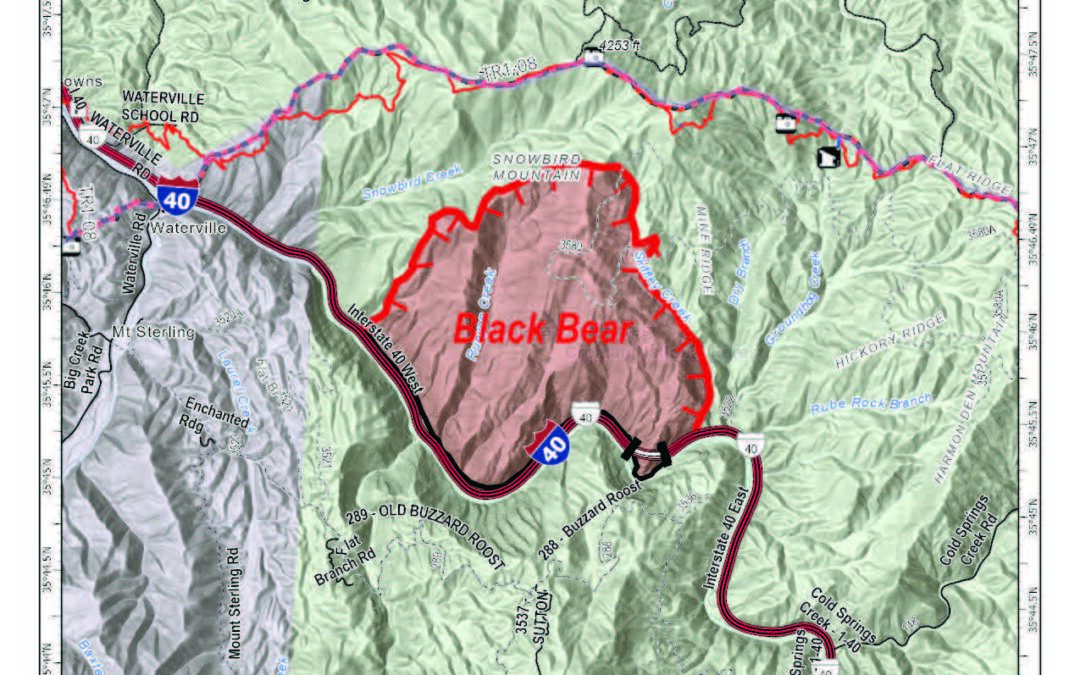
Fire Update Monday November 20
HIGHLIGHTS: Weather conditions yesterday moderated fire behavior, giving crews the opportunity to work on primary and contingency dozer and handlines. Along the Appalachian Trail, hand line was completed from the communications site east to Brown Gap and continues...
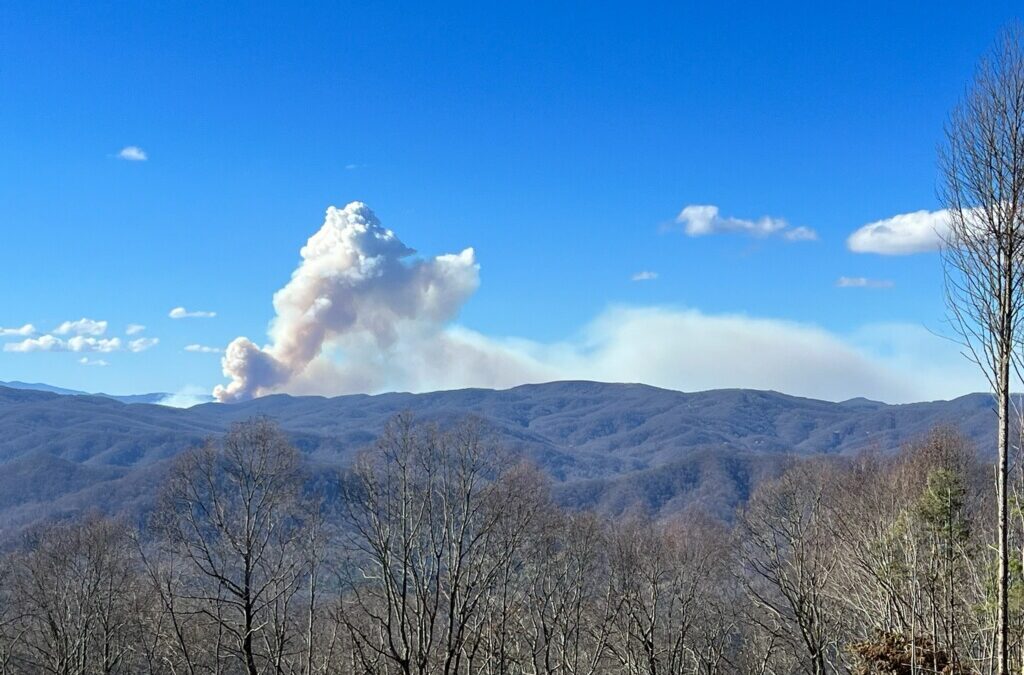
Friday November 17 Update
Daily update from NC Forest Service: Friday, November 17, 2023 Size: 382 acres | Containment 0% | Total personnel: 30 Information Phone Lines: (828) 330-5441 | Hours: 8:00 am - 8:00 pm | Email: 2023.blackbear@firenet.gov | Informational Websites:...
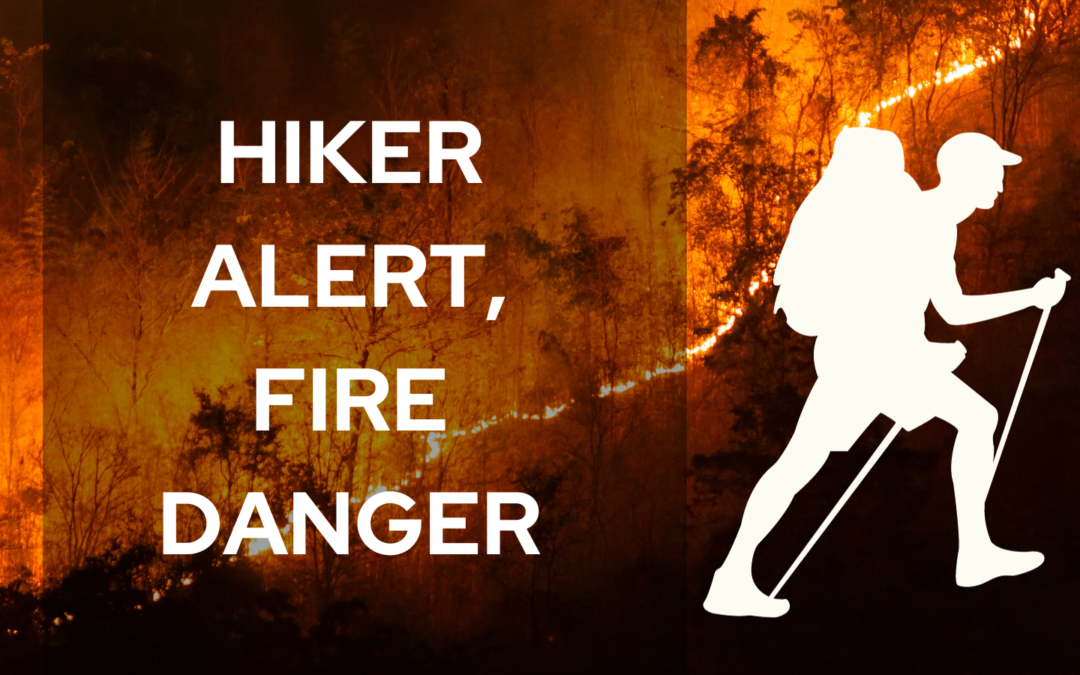
Hiker Alert, Fire Danger
Hiker Alert, Fire Danger: Large fire approaching Appalachian Trail. Hikers: DO NOT ENTER the area between I-40 and Brown Gap. Leave area. Seek safety now. There is no danger to interstate traffic along I-40.
Incident Map

- Check for Burn Bans or Fire Restrictions
- Don’t burn on dry, windy days
- Never use Flammable Liquids for fuel
- Keep burn piles small, not tall
- Have hose, bucket, rake, shovel nearby (and a phone, too.)
- It’s illegal to things other than vegetation
- Household trash must be hauled away
- NEVER leave a fire unattended
- Call 911 to report out of control fire
A Fire-Resistant Home
The new “A Fire-Resistant Home” poster features 10 Landscaping Tips that any homeowner
or tenant can take to reduce their homes’ risk of damage from wildfire.
A Fire-Resistant Home
The new “A Fire-Resistant Home” poster
features 10 Landscaping Tips that any
homeowner or tenant can take to reduce
their homes’ risk of damage from wildfire.
A Fire-Resistant Home
The new “A Fire-Resistant Home” poster features 10 Landscaping Tips that any homeowner or tenant can take to reduce their homes’ risk of damage from wildfire.
- NC Forest Service - Wildfire Report
The North Carolina Forest Service tracks daily fire activity using a database known as the “Signal 14”. The data from the Signal 14 is a rapid approximation of wildfire occurrence. It’s not an exact count. This information does not include uncontained fires or fires that occur on federal property.
Resources
FireWise USA — Being FireWise begins with you.
FireWise UAS Map — Locations of FireWise communities throughout the US
Homeowner/Community Resources — Steps to take to protect your home and assess risk
National Wildfire Coordinating Group
Plant Selector — Easy-to-use tool for selecting plants for use in fire-prone communities
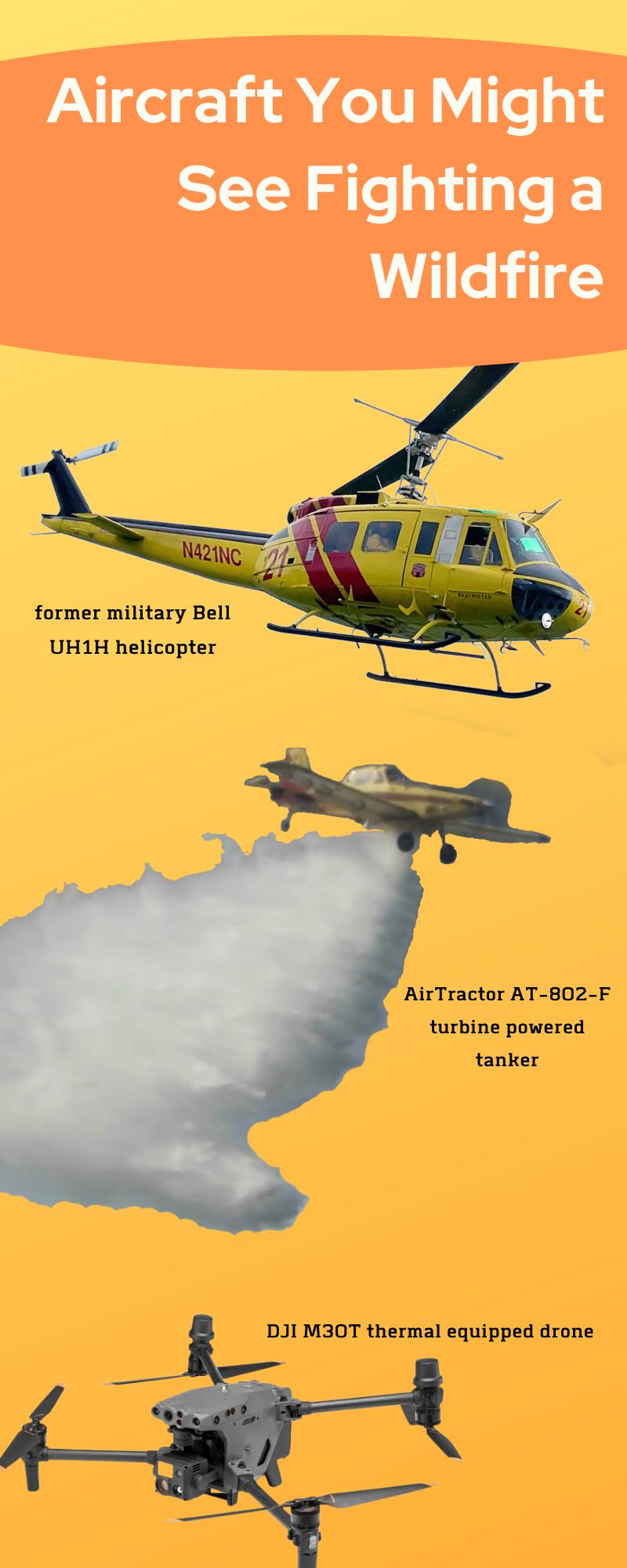
Preparing Your Home For Wildfire

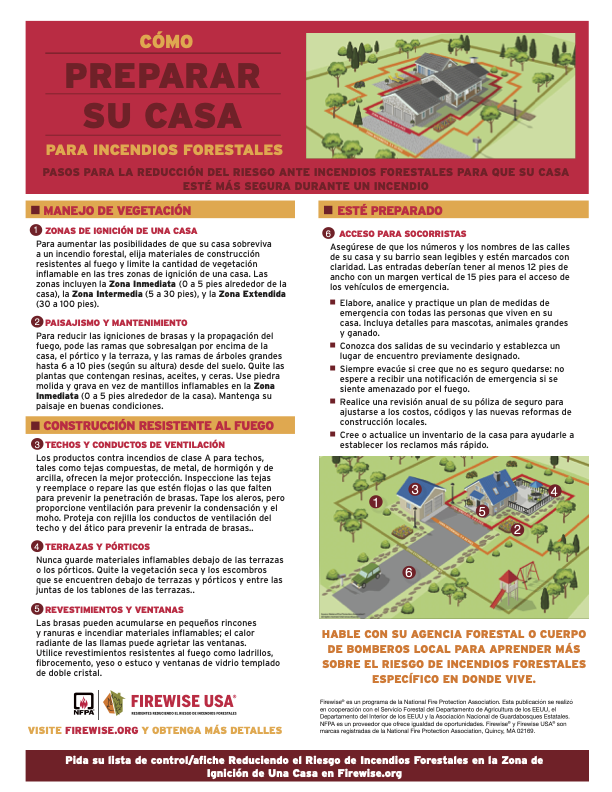
Vegetation Management
1. Home Ignition Zones
To increase your home’s chance of surviving a wildfire, choose fire-resistant building materials and limit the amount of flammable vegetation in the three home ignition zones. The zones include the IMMEDIATE ZONE (0-5 feet around the house), the INTERMEDIATE ZONE (5-30 feet), and the EXTENDED ZONE (30-100 feet.
Download: Reducing Wildfire Risks in the Home Ignition Zones
2. Landscaping and Maintenance
To reduce ember ignitions and fire spread, trim branches that overhang the home, porch, and deck and prune branches of large trees up to 6 to 10 feet (depending on their height) from the ground. Remove plants containing resigns, oils, and waxes. Use crushed stone or gravel instead of flammable mulches in the IMMEDIATE ZONE (0-5 feet around the house). Keep your landscape in good condition.
Fire Resistive Construction
3. Roofing and Vents
Class A fire-rated roofing products, such as composite shingles, metal, concrete, and clay tiles, offer the best protection. Inspect shingles or roof tiles and replace or repair those that are loose or missing to prevent ember penetration. Box in eaves, but provide ventilation to prevent condensation and mildew. Roof and attic vents should be screened to prevent ember entry.
4. Deck and Porches
Never store flammable materials underneath decks or porches. Remove dead vegetation and debris from under decks and porches and between deck board joints.
5. Siding and Windows
Embers can collect in small nooks and crannies and ignite combustible materials; radiant heat from flames can crack windows. Use fire-resistant siding such as brick, fiber-cement, plaster, or stucco, and use dual-pane tempered glass windows.
Be Prepared
6. Emergency Responder Access
Ensure your home and neighborhood have legible and clearly marked street names and numbers. Driveways should be well-maintained, at least 12 feet wide with a vertical clearance of 15 feet for emergency vehicle access.
7. Take action BEFORE a fire
- Develop, discuss, and practice an emergency action plan with everyone in your home. Include details for handling pets, large animals, and livestock.
- Know two ways out of your neighborhood and have a predesignated meeting place.
- Always evacuate if you feel it’s unsafe to stay – don’t wait to receive an emergency notification if you feel threatened from the fire.
- Conduct an annual insurance policy checkup to adjust for local building costs, codes, and new renovations.
- Create or update a home inventory to help settle claims faster.



